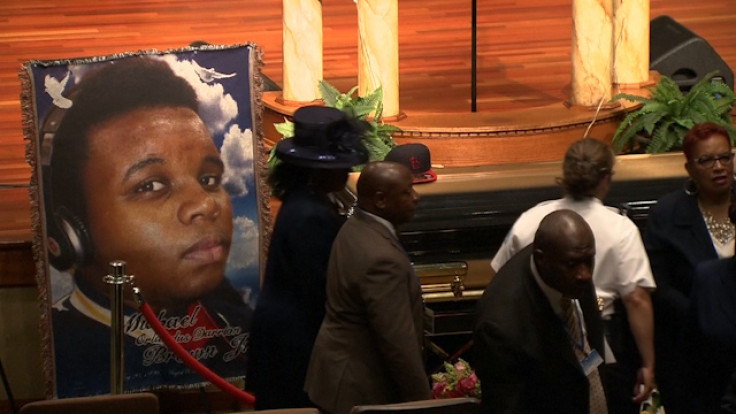Michael Brown Shooting: Has Anything Really Changed for Black Americans Since 1964 Race Riots?

Fifty years ago several cities in the US witnessed an uprising by the black community in protest at police brutality and social inequalities.
New York, Rochester and north Philadelphia were just some of the places rocked by violent clashes between black people and the police in the summer of 1964.
Now, fifty years on from the riots - and 51 years after Martin Luther King's memorable I have a Dream speech, aimed at promoting black people's rights - tensions have once again escalated between police and the black community.
This time the protests centred on 18-year-old African-American Michael Brown, shot dead by a white policeman in Ferguson, Missouri, on 9 August.
An audio recording examined by the FBI alleged that officer Darren Wilson fired 11 shots. Brown, who was unarmed, was hit by six bullets, two of which penetrated his skull.
Police brutality in the US
Brown's shooting sparked international outrage, with many calling for greater efforts to eliminate racial inequality, black poverty and police brutality against African-Americans in the US.
The teenager's death is just the latest of a list of homicides and beatings of black civilians by police in the States.
In 2009, unarmed 22-year-old Oscar Grant was shot dead in California by a police officer who claimed he mistook his gun for his taser. The officer was charged with involuntary manslaughter and sentenced to two years in prison.
In the same year, 43-year-old Eric Garner, suspected of illegally selling cigarettes in Staten Island, suffocated after a police officer put him in a chokehold. In footage of the incident, Garner, who was asthmatic, repeatedly said to the officer "I can't breathe". He died shortly afterwards.
According to professor and author Marc Lamont Hill, a black civilian in the US is shot by a police officer every 28 hours.
A 2013 study from the Malcolm X Grassroots Movement, which promotes African-Americans' rights, found that at least 313 black people were killed by police officers, security guards and self-appointed vigilantes in 2012.
Police brutality not the only example of race inequality
Brown's homicide is the latest event to bring to the surface the issue of racial inequality in the US. In the debate, some have tried to justify police brutality due to the high crime rate present in black communities.
However, police brutality is not the only example of race inequality.
According to recent reports, black people are six times more likely to be incarcerated in the US.
Texas death row inmate Ray Jasper highlighted the problem of racism against black people in his last letter before execution, saying that places still remain in the US where "a black person would not be welcomed."
Others have argued that in the same cities where black minorities rallied in 1964, black poverty, segregation and violence against African-Americans are still prevalent.
As long as police brutality against black people is only partly condemned, or justified as a consequence of alleged crime rates, the crisis may never be addressed and more may lose their lives.
© Copyright IBTimes 2024. All rights reserved.






